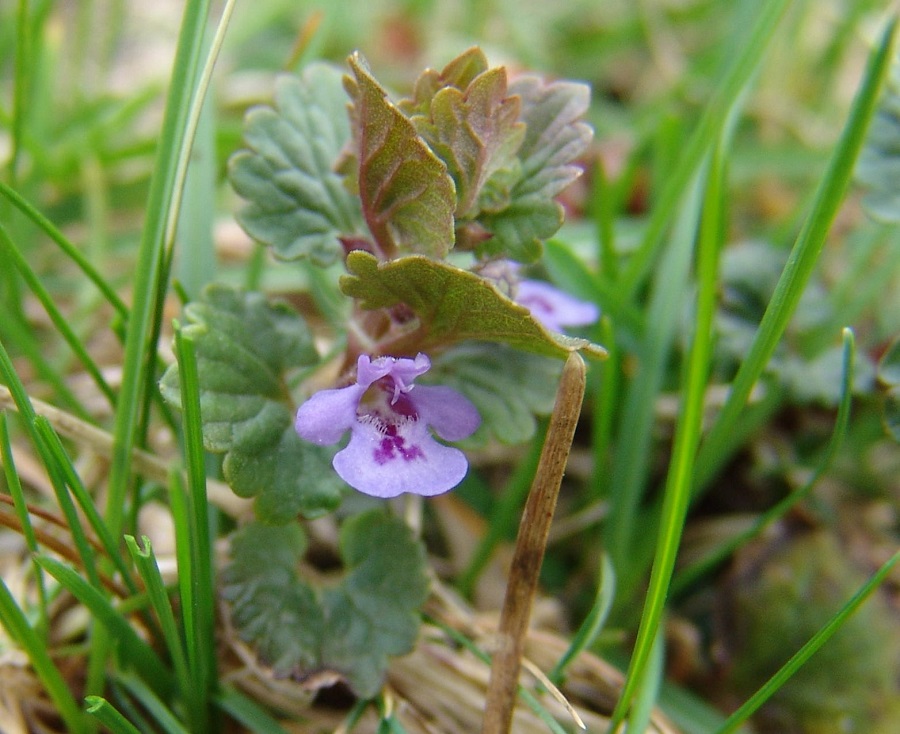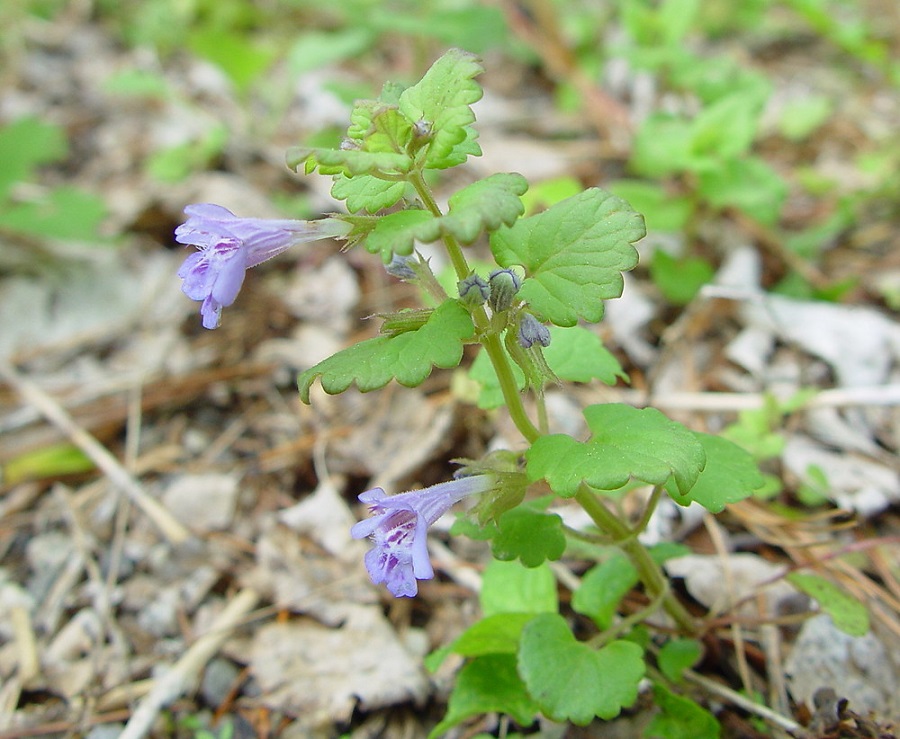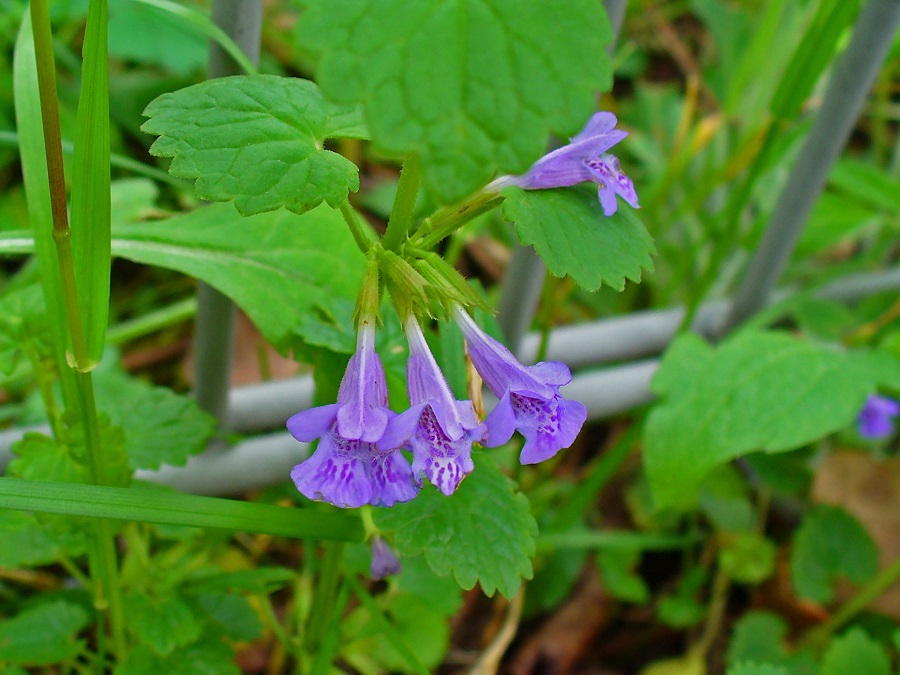Creeping Charlie - Learn How to Care for Glechoma Hederacea
A creeping Charlie is not only a brilliant garden decoration, but also bears valuable health benefits. Do you want to plant it but have no idea what it needs and how to cultivate it? Check the most important information on ground ivy cultivation. Discover its uses in herbal medicine.

Creeping Charlie - what kind of plant is it?
Creeping Charlie (Glechoma hederacea), also known as ground ivy or gill-over-the-ground is a perennial garden plant. It’s a member of the lib family (Lamiaceae), which is popular all over the world. The herb called creeping Charlie grows on all continents, although it is more commonly cultivated in Europe and North America.
What does a ground ivy look like?
Creeping Charlie is not a tall plant. With good conditions provided, it can grow up to 25-30 centimeters tall. It’s perfect for both small and large gardens. The branches spread on the ground, forming a beautiful carpet. The leaves of a ground ivy are heart-shaped and release a characteristic, relatively strong smell.
Glechoma hederacea blooms once per year. It typically happens between the beginning of March and the end of April - a lot depends on weather conditions. If frosts or very low temperatures linger for a long time, the blooming period can get postponed or shortened.

What does creeping Charlie need?
Picking the right spot is the basic element of taking care of creeping Charlie. The plant likes growing in half-shade or shade. Ground ivy is not fond of intense sunlight. If it’s not dispersed enough, the plant might get “scorched.” It’s definitely a shade-loving plant.
Soil for creeping Charlie should be relatively moist. The plant doesn’t like dry ground, but overwatering it and letting the water remain in one spot might lead to various fungal diseases and root rot.
Ground ivy prefers fertile soils. If you know the quality of the ground is poor, you can decide to feed it with a special product.
How often to water creeping Charlie?
Glechoma hederacea needs a constantly damp soil. That’s why regular, but not too excessive watering is important. Misting the plant every few days might be an effective method. Drought periods in summer are the only exception - if they occur, water the plant daily.

Can creeping Charlie withstand low temperatures?
Ground ivy is a frost-resistant plant, so it can easily endure low winter temperatures. You don’t have to dig it up off the ground - which makes the cultivation much easier.
Creeping Charlie - health benefits
Creeping Charlie is a plant of many health-promoting elements. The most important include:
- flavonoids,
- tannins,
- phenolic acids,
- vitamin C,
- calcium,
- iron,
- zinc,
- silicon,
- rutoside,
- antioxidants,
- anti-inflammatory ingredients,
- essential oils.
Such widespread benefits have been used for centuries, as creeping Charlie is an ingredient in herbal medicine. As claimed by many, creeping Charlie tea can clean and detoxify the organism. Such an elixir also affects the following issues:
- digestion,
- heartburn,
- baby colic,
- sinus infections,
- sore throat,
- ear infections.
Creeping Charlie might also be used for eye issues. You can use cooled tea to wipe your eyes. This way, you can alleviate inflammation, allergies, itchiness, watery eyes, and even reduce dark circles after a sleepless night.
Creeping Charlie tea is sometimes used by people suffering from nephrolithiasis and recurring bladder inflammation. Such a beverage aids the urinary system and might prevent various problems.

Creeping Charlie - uses for skin and better mood
A perfect look is essential for many people. They might find creeping Charlie very useful. It mostly aids various skin infections. It can also alleviate acne symptoms - it soothes and reduces swelling. Furthermore, it can be useful to people with oily skin. Creeping Charlie can be used as a skin toner.
Some people use ground ivy as a dandruff aid. In this case, the tea can be used as a rinse. It eliminates fungi and bacteria.
Ground ivy - side effects and risks
Creeping Charlie is a safe plant, side effects are rarely mentioned when talking about it. What’s certain, pregnant and breastfeeding women can’t use it. The components found in ground ivy might cause a miscarriage. That’s why you should be careful when using this plant and avoid it if you’re pregnant.
How to collect and dry creeping Charlie?
Creeping Charlie can be cut as an entire plant. Each part - stems, leaves and flowers are useful. Many people dry the herb in the sun, which is a big mistake. The temperature control is an important aspect of this process. It shouldn’t exceed 40°C (104°F). It’s essential if you want to preserve all the benefits of the plant.

📍 What is creeping Charlie?
Creeping Charlie, also known as ground ivy is a herbal plant. It doesn't grow too tall, but forms green carpets on the ground. It can become a beautiful decoration of the yard. The plant bears many health benefits. Creeping Charlie is also frost-resistant.
📍 How to brew creeping Charlie?
Creeping Charlie tea is easy to make. Just put the dried herb in a special strainer, put it in a cup and pour boiling water over it. Depending on the strength you desire, brew the herb from 7 to 15 minutes.
📍 When to harvest creeping Charlie?
The best time to harvest creeping Charlie is when the plant blooms. Typically, it's between May and June. That's when the plant has the best health benefits.
📍 What is creeping Charlie good for?
Creeping Charlie bears many health benefits. It can be used for treating stomach issues - such as diarrhea, bloating and heartburn. It's also good for sinusitis and otitis. What's more, creeping Charlie tea can be used for cleansing acne skin, eyes and inflammation.
Featured articles




